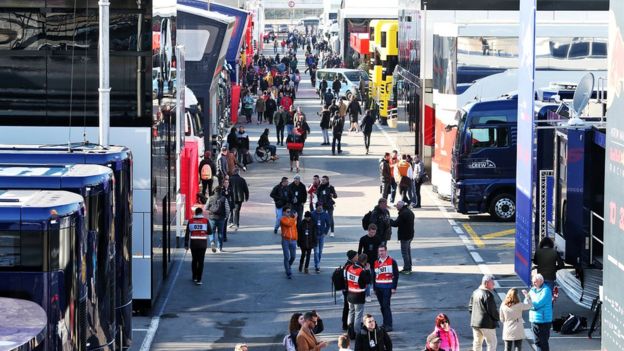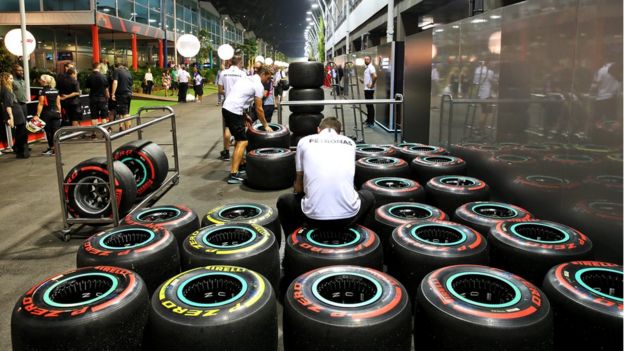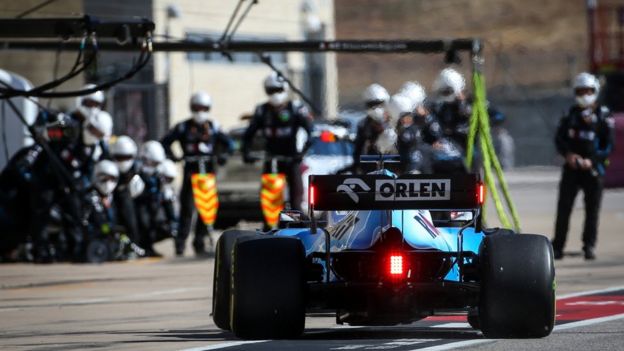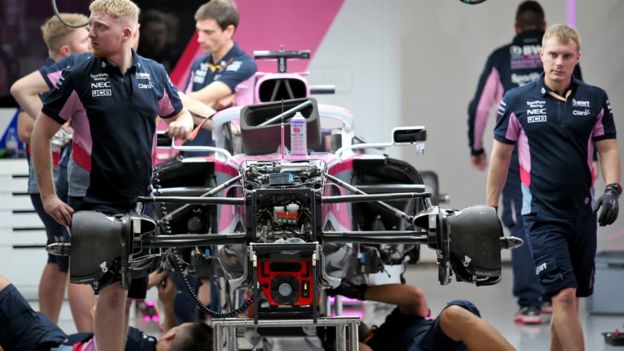

It is no secret that Formula 1 racing is a polluting sport, or that its previous owner Bernie Ecclestone wasn’t particularly interested in sustainability.
But things have changed since the elite motor-racing series was taken over by US media giant Liberty Media in 2017. Last year F1 announced its first ever sustainability plan, with an ambitious goal to make itself “carbon neutral” by 2030.
When I meet Yath Gangakumaran – the man responsible for leading the plan – at the World Economic Forum in Davos, he is keen to distance himself from sport’s old guard, although he won’t comment on Mr Ecclestone’s tenure.
“Up until 10-15 years ago sport wasn’t run in a mature way – typically by ex-players not business professionals. It’s become much more professional and is catching up with other industries, and that includes on sustainability.”

Formula 1’s carbon footprint is “material”, he says, but it has little to do with the cars, which are among the most fuel efficient on the planet thanks to their lightweight design and innovative hybrid engines.
The main problem are the races themselves – 22 in total this year – which require large amounts of equipment, cars and people to be shipped around the world, often by aircraft. In 2019, the sport’s 10 teams each notched up an average of 110,000 air miles.
Then there is the huge amount of C02 emissions generated by F1’s 500 million fans globally who will travel far and wide to see the sport.
It makes the 2030 target seem wildly ambitious, but as F1’s director of strategy Mr Gangakumaran is bullish: “There is no point just throwing out a target and having it as a marketing gimmick. Ultimately you will be held accountable, and so you should.”

First to note is that the plan will only target emissions generated by the activities of the F1 business – which manages the series – and the individual teams who compete.
That amounts to some 256,000 CO2 equivalent tonnes per year, according to Liberty Media, which calculated F1’s carbon footprint for the first time ever last year.
But the plan won’t cover emissions generated by fans – the much bigger part of the problem. When they are accounted for, F1’s footprint rises to some 1.9 million CO2 equivalent tonnes.
“We think it is just too difficult to control what our fans do because they are ultimately their own custodians. So we think it is most appropriate and achievable to focus on what we do have control over,” says Mr Gangakumaran.

That said, Liberty will encourage fans to use public transport to get to Formula 1 events, or to offset their air travel if they fly. It has also pledged to make races sustainable by 2025, including banning single-use plastics.
The sport will also continue to fly its operation around the world, and while Mr Gangakumaran says its absolute carbon footprint will decrease, it will have to rely on some carbon offsetting.
This may anger the fiercest environmental campaigners, who view offsetting – for instance, by planting trees to compensate for your emissions – as a cop out.
But Mr Gangakumaran says the business will keep it to a minimum and has to be realistic. “We are a global sport and we have fans around the world who want to see F1. That requires travel.”
The business also plans to spend more on transferring its own sustainable technologies to the wider world – something it has a strong record of.

In its 70-year history, Formula 1 has pioneered ground-breaking aerodynamics and efficient brake systems that have found their way into everyday road cars.
Other industries have benefited too. Take the way an F1-inspired aerofoil attached to chiller cabinets has cut refrigeration costs by about 15% in some supermarkets.
The strip, the result of a collaboration between Williams Advanced Engineering and Aerofoil Energy, was rolled out by Sainsbury’s across its 1,400 supermarkets and convenience stores in 2017.
Professor Mark Jenkins, an F1 expert at Cranfield University, says Liberty Media’s 2030 goal is highly ambitious and should be lauded. “But whether it is achievable is another question.”
He notes that Formula 1 has increased its number of races from 21 to 22 this year, while Mr Gangakumaran concedes there are plans for several more.

Prof Jenkins says: “One of the obvious ways to reduce the carbon footprint would be reduce the number of races. But F1 also needs to increase its sales so there is a tension there.”
In addition, the sport will introduce a cost cap in 2022 as it looks to even out competition between teams. The three that dominate – Mercedes, Red Bull and Ferrari – will be hit the hardest.
“It will limit what they can spend at a time when they are also being asked to become more sustainable. Is that really wise?” says Prof Jenkins.
Liberty Media’s contracts with its F1 teams are up for renewal at the end of this year.
But Mr Gangakumaran says the firm is in advanced discussions and he is quietly confident the teams will re-sign.

He adds that Liberty has factored in the growing number of races into its carbon reduction plan, and that there will only one or two more. Becoming more sustainable could actually save F1 money, he adds.
All eyes will be on F1 as it works towards its goal. It also faces stiff competition in the sustainability stakes from events such as the World Cup, which could become carbon neutral by 2022.
“You can’t say anything is 100% but we wouldn’t be putting these targets out there if they weren’t ambitious enough or we didn’t think we could achieve them,” Mr Gangakumaran says. “Most importantly our fans are totally behind us on this.” – bbc.com